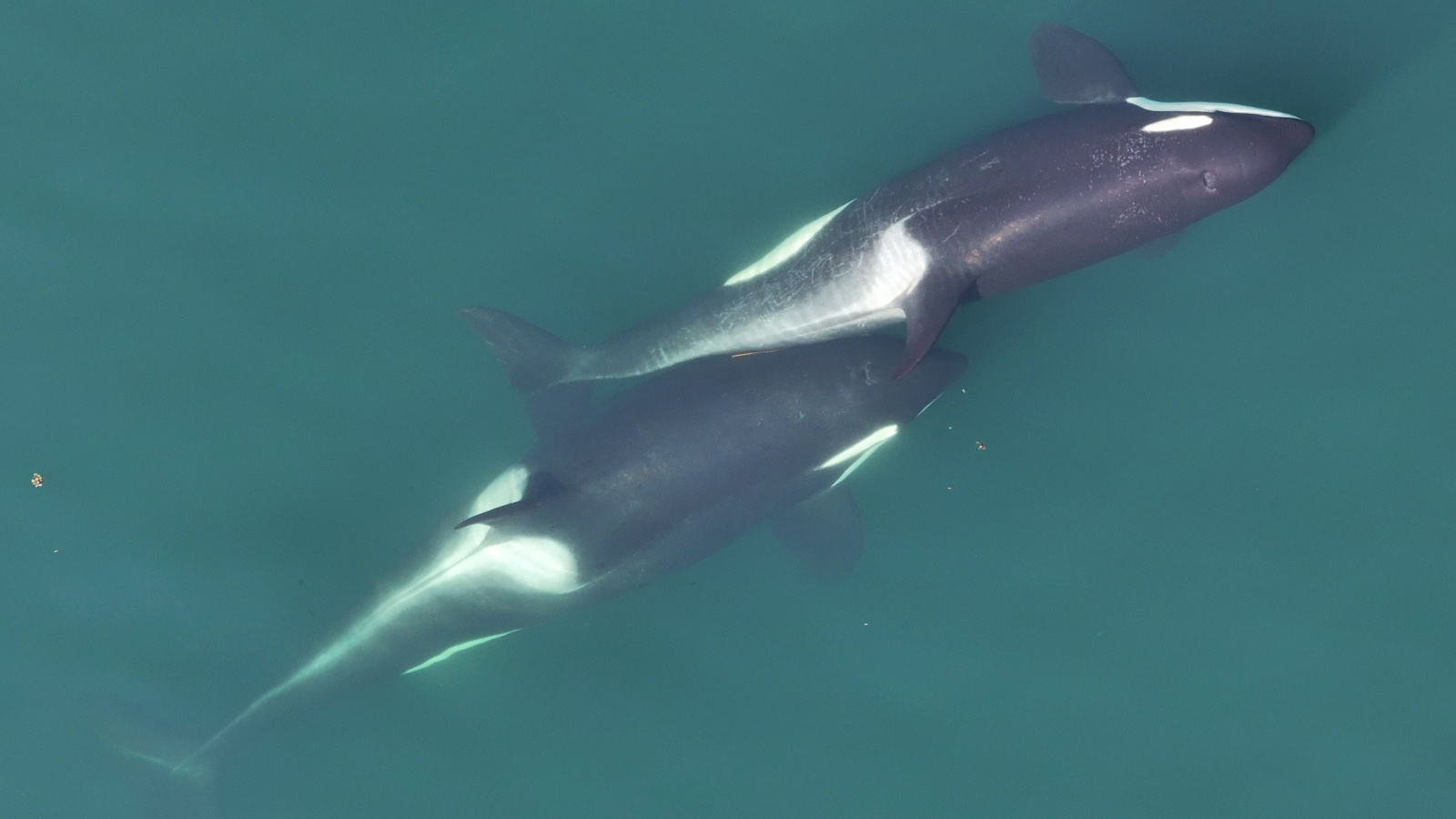Orcas have been filmed making and using tools for what seems to be a pleasurable, massage-like experience.
The southern resident population of killer whales or orcas (Orcinus orca) lives in a region of the north-west Pacific Ocean called the Salish Sea, which borders Washington and British Columbia. This population exclusively eats fish, and its members are known for the bizarre fad of wearing salmon on their heads.
Now they have been seen doing something that’s never documented among marine mammals before.
Michael Weiss at the Center for Whale Research in Friday Harbor, Washington, and colleagues captured high-resolution drone footage of the orcas from above, and observed them breaking off sections of bull kelp (Nereocystis luetkeana), pressing the piece of stem against a partner and rolling it between their bodies, in what seems to be a grooming ritual.
Weiss and his colleagues believe it is the first example of tool manufacture by a marine mammal, the first known tool use in a wild animal that benefits two individuals at once, and the first time we’ve seen a non-human animal manipulating a tool with the core of its body rather than with an appendage. They reported their findings June 23 in the journal Current Biology.
“They’ll use their teeth and the movement of their heads and their bodies to break off about a two-foot-long length of that kelp’s stem, or stipe, then approach another whale and flip it onto their rostrum, or their kind of nose, and press that kelp against the side of their partner,” Weiss told Live Science.
Related: Living lunch box? Iceland orcas are unexpectedly swimming with baby pilot whales, but it’s unclear why.
“From there, they kind of maneuver their body to keep the kelp wedged between the two of them and they roll it back and forth, sometimes for just a few seconds, sometimes for up to 15 minutes,” Weiss said.
Deborah Giles, an orca specialist at the non-profit SeaDoc Society who wasn’t involved in the work, told Live Science: “It’s super interesting behavior. This is purposefully creating the tool that they want to use.”
Weiss’s team has seen male and female orcas of all ages do this, across different social groups, or pods, in the southern resident community.
Animals tend to groom to reduce stress, keep themselves in good health and create and reinforce social connections, so is that why the orcas are doing this?
As highly social creatures, orcas might be expected to groom each other, Els Vermeulen, a cetacean specialist at the University of Pretoria in South Africa but wasn’t involved in the work, told Live Science. “Despite the study being new and this specific behavior being reported for the first time, it comes as no surprise to me.”
Weiss’s team found that kelp rubbing occurs more between related individuals and those of a similar age. This is what would be expected if grooming correlated with strong social relationships, said Weiss.
The team also found that whales with more dead skin were more likely to be rubbing, so it could help with hygiene.
“When we talk about animal behavior, there’s the function, or the fitness benefit the animal gets, and that will relate to health and wellness. But there’s also the mechanism in the brain causing them to want to do this,” Weiss said. “I think a lot of that is that it feels nice.”
Some animals, including chimpanzees, birds and elephants, are known to make and use tools, but examples among marine animals are limited. Sea otters use stones to break open shellfish and dolphins have been spotted with sponges on their noses to help them forage, but they’re not making these tools.
Yet kelp grooming isn’t the only example of how orcas can manipulate their environment to create “tools.” They have also been seen making waves to wash seals off ice floes so they can catch them.
The southern residents are the only population of orcas seen using kelp for grooming so far, but that may be because researchers normally observe orcas from boats and wouldn’t be able to see the small pieces of kelp.
“I’ve often observed killer whales rolling around on each other from a boat. It makes me wonder if they’ve been engaging in this behavior all of that time,” said Giles. “Drone imagery has created an opportunity for us to see into the lives of these animals in a way that has never been possible before.”
As for the salmon hat fad, experts are still none the wiser. “We don’t know why they do it,” said Giles. “But it occurs when there’s more abundant access to prey. It might just be that they’re playing with their food. It might just feel good to put a salmon on your head.”
But time could be running out to study these remarkable orcas. The southern residents are listed as an endangered population under the U.S. Endangered Species Act. At the last census there were only 73 of them, said Weiss, and if we lose those whales. “It’s not just 73 whales gone,” he said. “It’s a set of cultural traditions and a society that is unique. We might never see this behavior again.”
Orca quiz: Will you sink or swim?
